Last updated on April 7, 2022
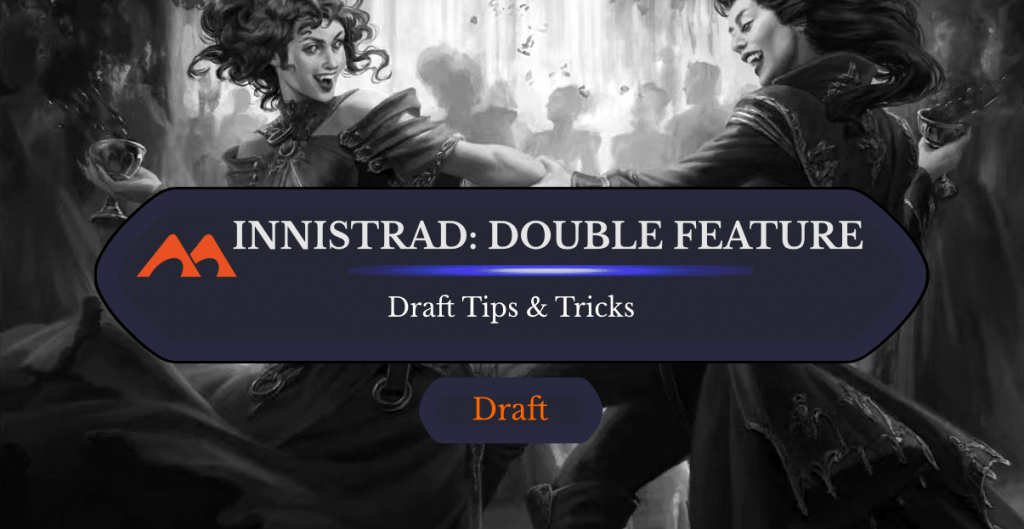
Falkenrath Celebrants | Illustration by Anna Steinbauer
Greetings, planeswalkers! Today will be a brief but detailed dive into the new Limited format, Innistrad: Double Feature. Featuring 535 black-and-white cards you may or may not be able to read, Double Feature jams Midnight Hunt and Crimson Vow together for a fresh Draft/Sealed experience.
Ready? Let’s get started!
What is Innistrad Double Feature?
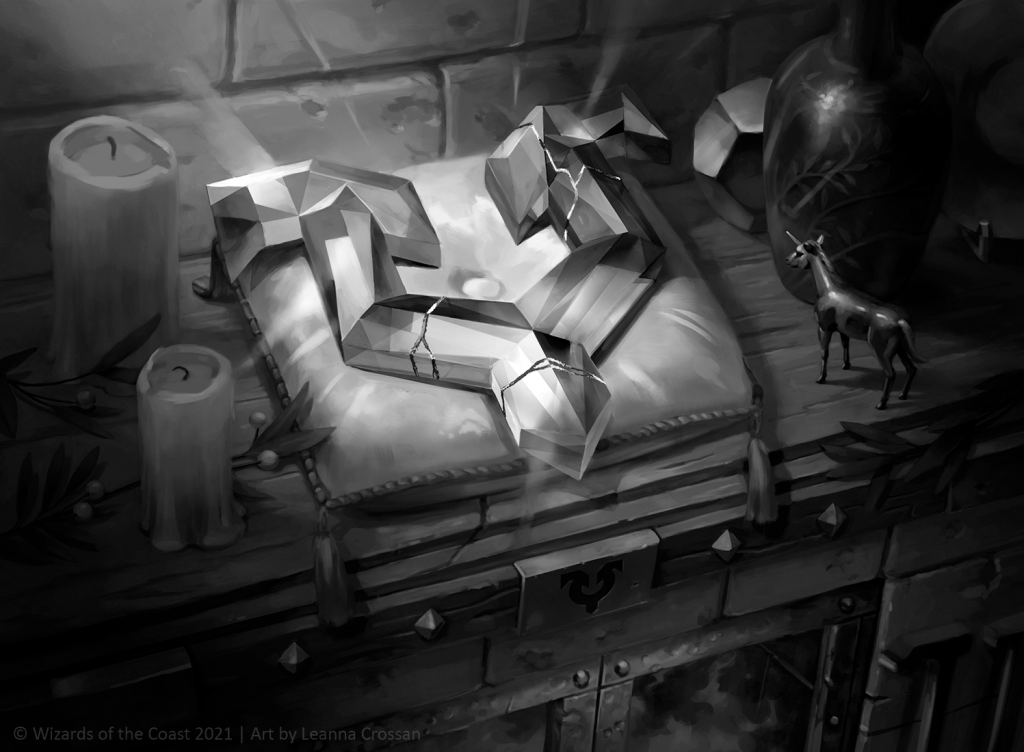
Honored Heirloom | Illustration by Leanna Crossan
The short of Double Feature is that it’s an experimental Draft format that melds two sets into one for a novel Limited experience. Every card in the set (online or otherwise) is printed in a unique grayscale coloration inspired by classic monster movie flavor.
Even though the set was announced as featuring “select cards from the two sets,” Double Feature is a 1:1 mix of both sets with no cards missing. Each pack contains:
- 4 Midnight Hunt commons
- 4 Crimson Vow commons
- 2 Midnight Hunt uncommons
- 2 Crimson Vow uncommons
- 1 Midnight Hunt rare/mythic
- 1 Crimson Vow rare/mythic
- 1 silver screen foil card
A silver screen foil sounds fancy, but I can tell you from my drafts and simulators so far that it’s just a foil slot that’s always present and never a basic land. This means your Double Feature packs are actually a bit juiced compared to its predecessor sets.
You have twice as many rares in Sealed and always pass at least one rare P1P1 (pack one pick one) in draft. There are also more uncommons in each pack!
Strategy Time
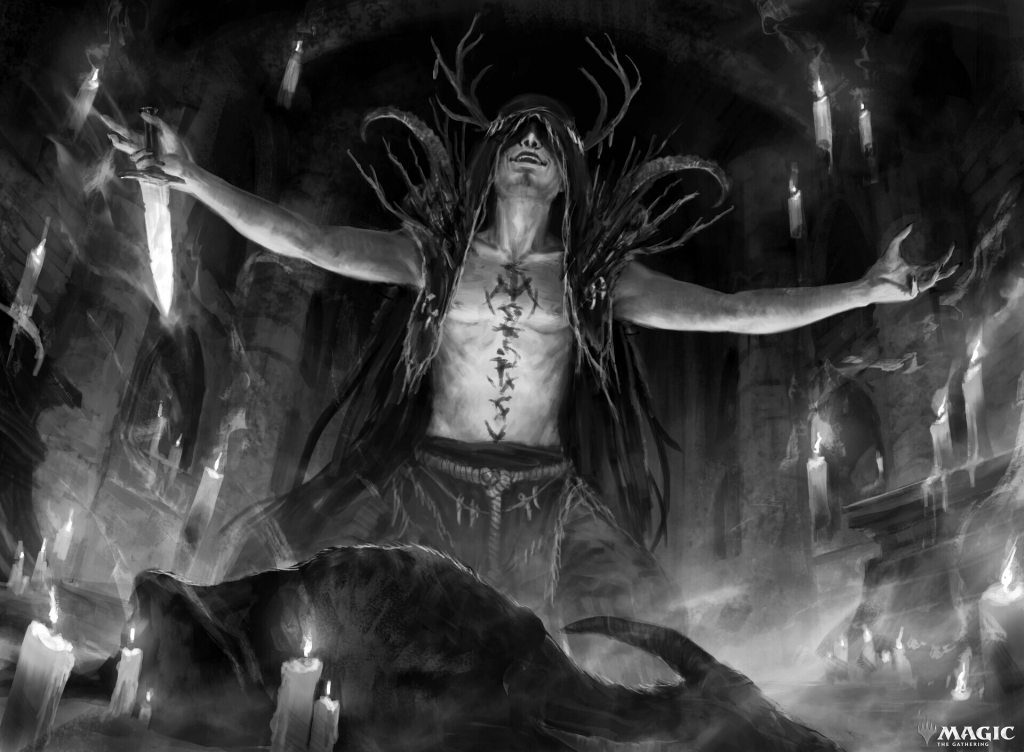
Ecstatic Awakener | Illustration by Tuan Duong Chu
So how should you approach a format that’s basically 2-in-1, plus a higher density of rares and uncommons?
The most important thing to understand is how Crimson Vow and Midnight Hunt mix with each other. There’s some clear overlap for certain color pairs and mechanics, and some areas of mediocre synergy for others. The higher distribution of powerful higher-rarity cards also works in the favor of drafting mana fixing and 3+-color ramp/control decks.
If you’re coming to this format from Crimson Vow, some differences between it and Midnight Hunt were:
- The format slowed down since decks relied less on synergy and the lack of decayed zombies put less pressure on life totals.
- Rares in Crimson Vow were some of the most groan worthy of any set in recent memory, a stark change from Midnight Hunt where Organ Hoarder was better than about half of them!
- There were less multicolor cards in Crimson Vow, but also slightly better mana fixing with Weaver of Blossoms and Honored Heirloom at common instead of Jack-o'-Lantern and Crossroads Candleguide.
- The synergies that defined each 2-color pair varied, with some remaining the same, like Gruul Werewolves, and others shifting completely, like Orzhov Tokens vs Orzhov Lifegain.
Double Feature Archetypes
Orzhov Midrange: Tokens and Lifegain
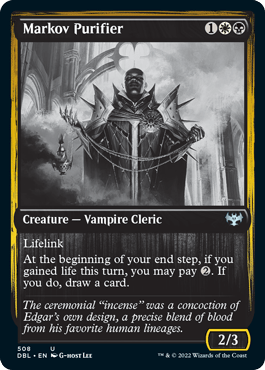
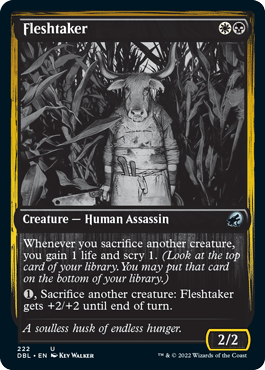
Base Orzhov () decks in this format should be good-stuff decks first and foremost.
The good lifegain cards like Markov Purifier are still good regardless, but roleplayers like Traveling Minister and Heron of Hope don’t play well alongside cards like Fleshtaker and Novice Occultist. Lunarch Veteran already overperformed relative to how it looked, but it should play excellently in Orzhov since it mixes lifegain and sacrifice fodder into one convenient package.
How your exact Orzhov deck will look is going to vary from draft to draft, but I’d expect to lean into Midnight Hunt synergies (Ecstatic Awakener and friends) more often than lifegain, which was a minor theme in Crimson Vow anyways.
Dimir Midrange: Decayed and Exploit Zombies

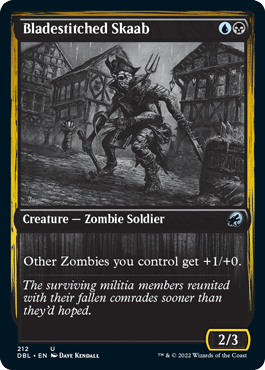
Oh boy is this a good archetype! Dimir () plays perfectly with itself in this set, which is a scary thought since it was a top deck in Midnight Hunt and still pretty viable in Crimson Vow.
There’s basically nothing better to sacrifice to powerful exploit cards than decayed Zombie tokens. This generally increases the power level of everything with exploit, but the decreased number of decayed cards cools me a bit on all-in payoffs like Corpse Cobble.
Still, I can’t recommend this color pairing enough and look to jump into it whenever I see any signs it's open. That’s usually Bladestitched Skaab, Skull Skaab, or late exploit creatures.
Rakdos Aggro/Midrange: Damage Matters and Blood Vampires
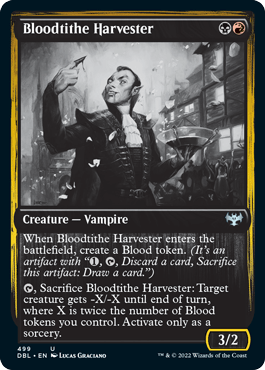
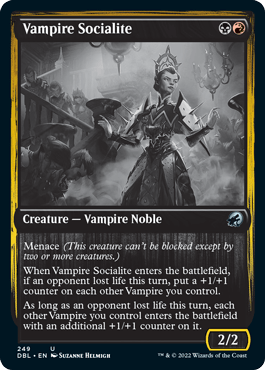
Good Rakdos () decks in this format should generally be vampire tribal leaning on payoffs like Vampire Socialite and Stromkirk Bloodthief. But there aren’t actually many cards that fit this description so you might just have to make do with a more normal style aggro deck.
You won’t have many Blood decks, but great Blood cards like Falkenrath Celebrants are even better since there are less of them. The first copy of Falkenrath Celebrants you cast makes a massive difference in the midgame!
One card I’ve liked in this color pairing is Voldaren Epicure. This is a cheap and aggressive creature that can easily trigger any “damage matters” cards you have in midgame without even needing combat.
Golgari Midrange/Control: Morbid and Butts Matter
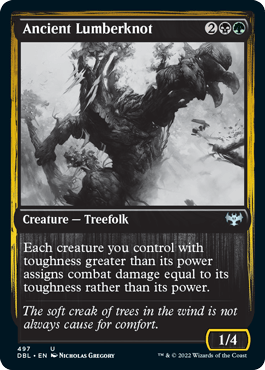
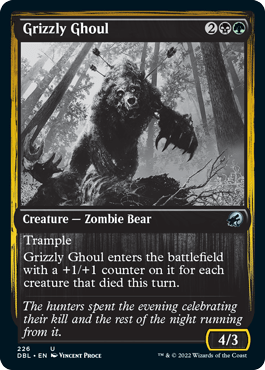
Golgari () was an underperformer in both formats for me since the toughness-matters theme was only on a few cards in Crimson Vow and the morbid theme in Midnight Hunt felt a bit underpowered. I guess the good news is that x is one of the best possible bases for a 5-color deck. Green has the best fixing and black has the best removal.
These are both very valuable qualities for a deck looking to extend games to cast whatever rares it happens to have drafted/opened that session! The basics is to prioritize bombs, fixing (especially Weaver of Blossoms and Dawnhart Rejuvenator), and the best black removal you can draft (e.g., Defenestrate, Bleed Dry, etc.).
If you want to stick a bit closer to just being Golgari, the good news is that Diregraf Rebirth, Grizzly Ghoul, and Ancient Lumberknot are pretty good on rate. The self-mill theme is more promising than toughness-matters by a long shot since toughness matters is gimped by being based on a handful of cards that appear half as often.
Gruul Midrange/Aggro: Werewolves and Werewoofs

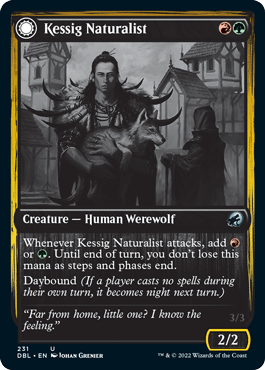
One nice improvement in Crimson Vow was that the werewolves at common and uncommon were generally of a slightly higher quality. This is great news in Double Feature since you can combine werewolf support like Unnatural Moonrise with good werewolves like Hookhand Mariner, Weaver of Blossoms, and Ballista Watcher in addition to playable Crimson Vow wolves.
Focusing your Gruul () deck on playing as many werewolves as possible is a big deal for cards like Tavern Ruffian that are great at Night but very weak during the Day. Try to draft for strong instants like Burn the Accursed that make it easy to pass from Day to Night without losing a full turn of mana.
Simic Control: Flashback and Self-Mill
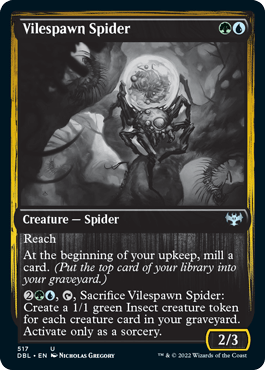
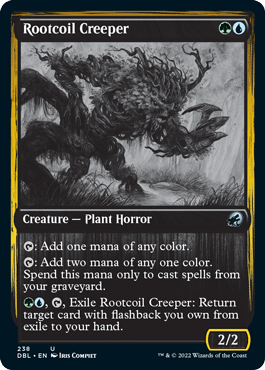
This may be the most improved 2-color pairing, at least from the perspective of someone who drafted way too many Mulchs in Crimson Vow! That deck always underperformed for me since it had weak removal, few win conditions, a slow/grindy game plan that it couldn’t always execute, and could even lose to itself by decking against Orzhov Lifegain! The good news for Moldgraf Millipede and friends is that Simic () was substantially better in Midnight Hunt.
The strategy here is to use cards like Mulch and Organ Hoarder to generate powerful card advantage with flashback spells like Shadowbeast Sighting, Winterthorn Blessing, and disturb creatures. This is also a strong deck for splashing rares if you have any since you can pick up green dorks like Dawnhart Rejuvenator and Weaver of Blossoms.
Selesnya Aggro/Midrange: Coven and Training Humans
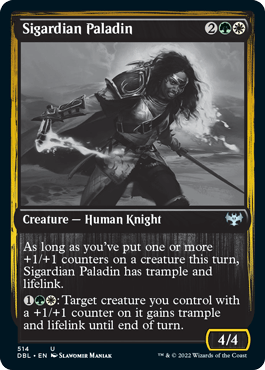

Selesnya () has played out pretty well in Double Feature so far. One quirk to Selesnya Training that I talked about in my Ultimate Guide to Crimson Vow is that every single creature in the set with training was a human. The same was also true with coven in Midnight Hunt barring Sigarda, Champion of Light. This is great news for Midnight Hunt’s Selesnya cast since human payoffs like Katilda, Dawnhart Prime, Resistance Squad, and Laid to Rest should play well.
Training and coven conflict in their goals, but only slightly. Both are go-wide mechanics that want you to play a high creature count plus a few ways to support them. Training is better with combat tricks while coven is a little better with permanent enhancements like equipment. But the good Selesnya cards (Join the Dance, Sigardian Paladin, Dawnhart Wardens) probably don’t care what your exact coven/training balance is and are good regardless!
Azorius Midrange/Tempo: Disturb and Disturb Spirits
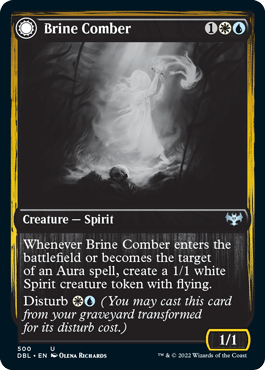

The tribe is the same in both sets but there aren’t too many direct Spirits-matters payoffs. Midnight Hunt’s take on Azorius () was grindier and more concerned with value while Crimson Vow’s was scrappier and less resilient. Combine these and you find yourself leaning more towards Midnight Hunt most of the time since disturb generally played better as extra creatures than extra auras.
This makes aura-focused payoffs like Brine Comber and Stormchaser Drake a bit worse and aura support cards like Cradle of Safety and Supernatural Rescue nearly unplayable. The most successful Azorius decks I’ve seen have been grindy and leaned on Organ Hoarder and other graveyard-friendly cards to grind out card advantage and slowly win in the air.
Boros Aggro: Aggro and Aggro

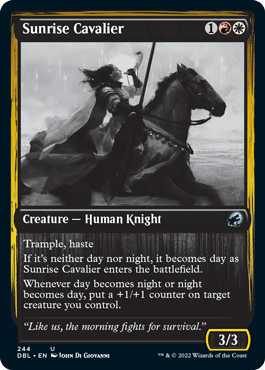
I'm only half joking with the title.
Boros () has even less synergy when you staple the two sets together. Midnight Hunt Boros had an awkward Day/Night theme that was mostly negligible, even if Sunrise Cavalier was great regardless. Markov Waltzer’s theme is “this is aggressive and good on rate.”
You should be looking to play 15 to 18 creatures, some pump spells, a good curve, and a bunch of cheap creatures that are good on rate. Focus on attacking fast and early while leaning on flyers and incidental damage like Burn the Accursed) to top the curve. The easiest ways to get into Boros are the multicolor creatures I mentioned plus Angelfire Ignition, a gross aggressive rare that you should absolutely slam if you see it.
Izzet Aggro/Control: Spells Matter and Noncreatures Matter

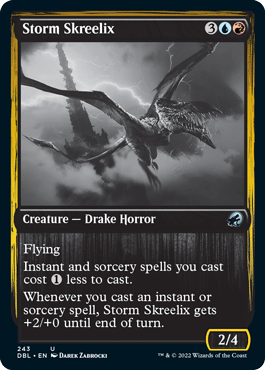
Izzet () has a pretty decent overlap between the two sets since the overall theme didn’t change much so most of the cards work pretty well together.
The most important question with Izzet is to figure out what pace your deck is going for. Are you a controlling deck looking to grind out card advantage and win with Sludge Monster, Burn Down the House, and Hullbreaker Horror (lucky!)? Or do you have three Festival Crashers, three Kessig Flamebreathers, and more cheap spells than you know what to do with?
You often have plenty of “playables,” but knowing which ones to start and which to shelve is important for getting the most out of your Izzet decks. Cheap burn spells like Moonrager's Slash and Abrade tend to excel in both versions and should always be prioritized.
Non-Archetype Tips
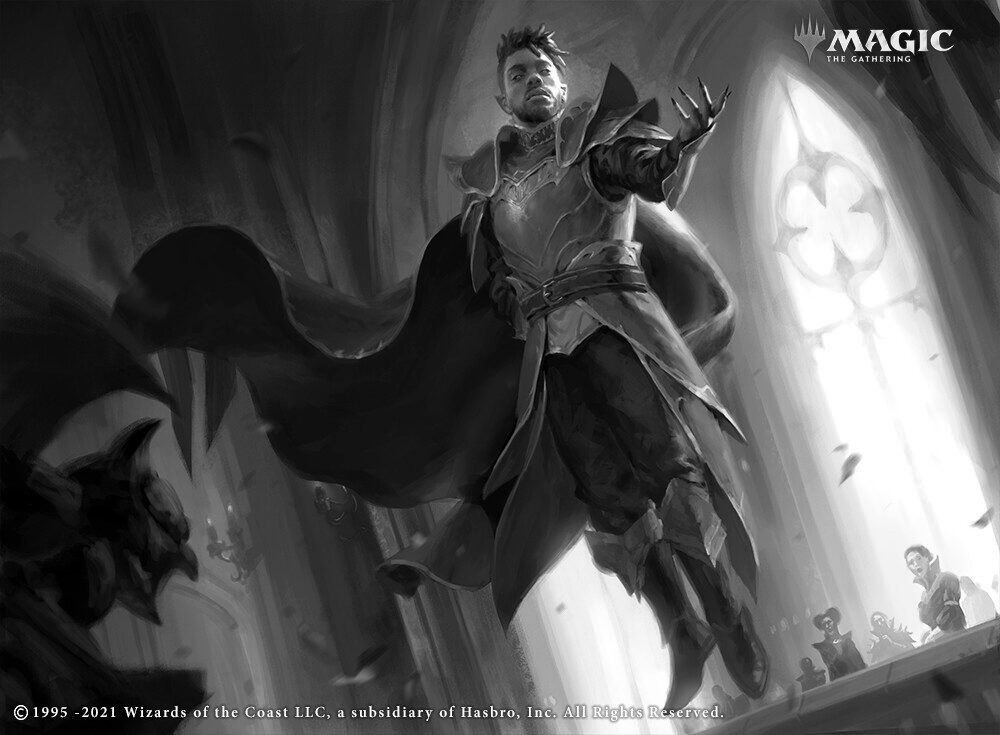
Markov Waltzer | Illustration by Joshua Raphael
The difference in pack distribution will affect your games and drafts quite a bit. So consider the following to get the most out of your Double Feature experience:
- More rares in Sealed equals more bombs for both players. You need to be playing every bit of removal you can get your hands on and holding onto yours whenever you can for the next “wow, another rare” around the corner.
- This is great news for x ramp piles. If you start with some powerful cards but can’t find an archetype lane to hop into, consider prioritizing mana fixing over filler and trying this out. Simic and Golgari are the best starts for this strategy, but any x deck can pull it off.
- Limit your splashes to just one or two cards that you can support with artifact-based fixing and Evolving Wilds if you aren’t green. The low card quality needed to afford splashing outside of green is a liability for deep splashes.
- The format generally feels a bit slower for me since decks are good-stuff piles thanks to the large distribution of cards more often than not. It’s hard to focus your strategy on combos of certain commons since there are so many cards in the set and fewer commons, so focus on value and power over tempo (in a general sense) when drafting.
Wrap Up
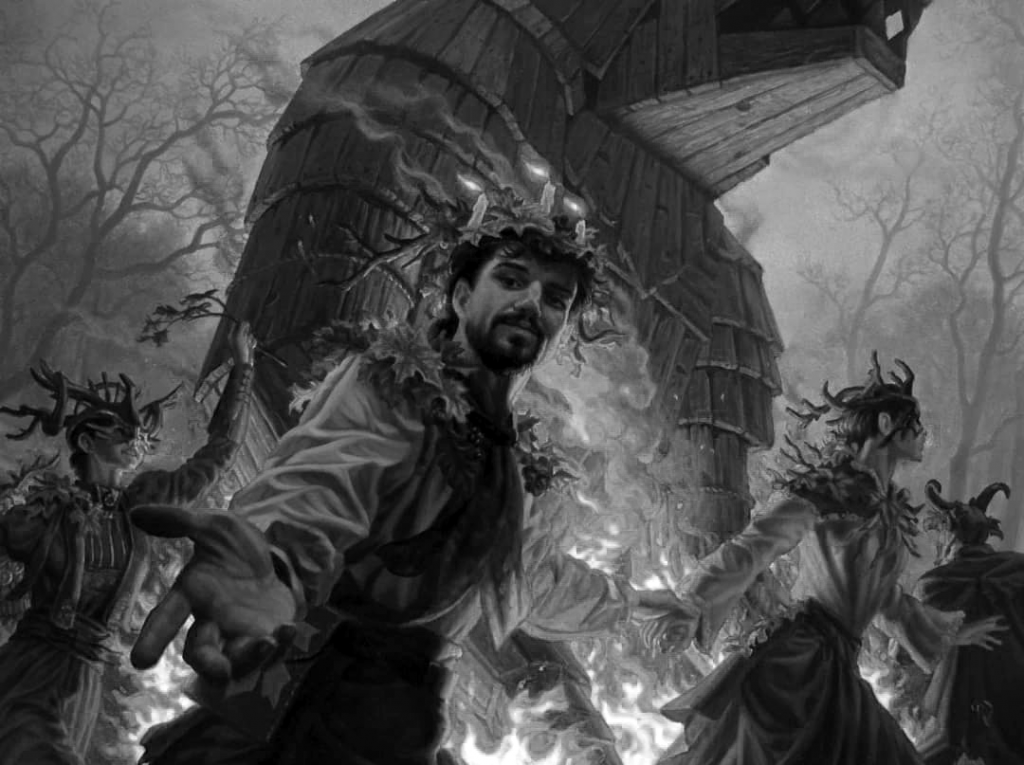
Join the Dance | Illustration by Raoul Vitale
I hope all this advice has helped you see Innistrad: Double Feature in a clearer light! You might not be able to read every card, but you should at least be able to read your draft pod and assemble a powerful, colorful deck of cards to battle your opponents.
What has your Double Feature experience been like so far? Do you like the format? Do you think the combo draft set is a good idea? Let me know down in the comments or over in Draftsim’s official Discord.
I’ll be back soon with detailed early coverage of the exciting new set, Kamigawa: Neon Dynasty, and all its powerful new cards and strategies. Until then, may your opponents see gray in more ways than one!
Follow Draftsim for awesome articles and set updates: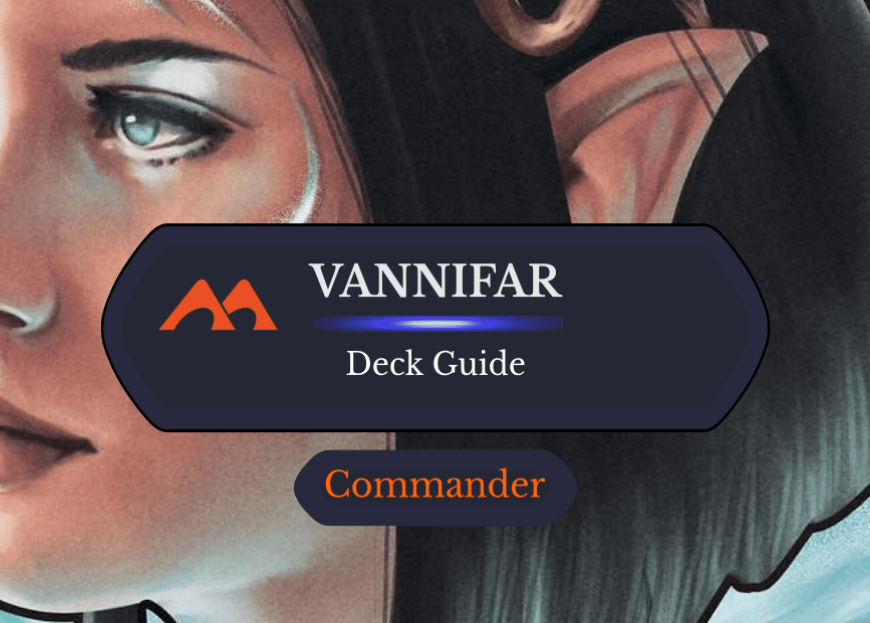
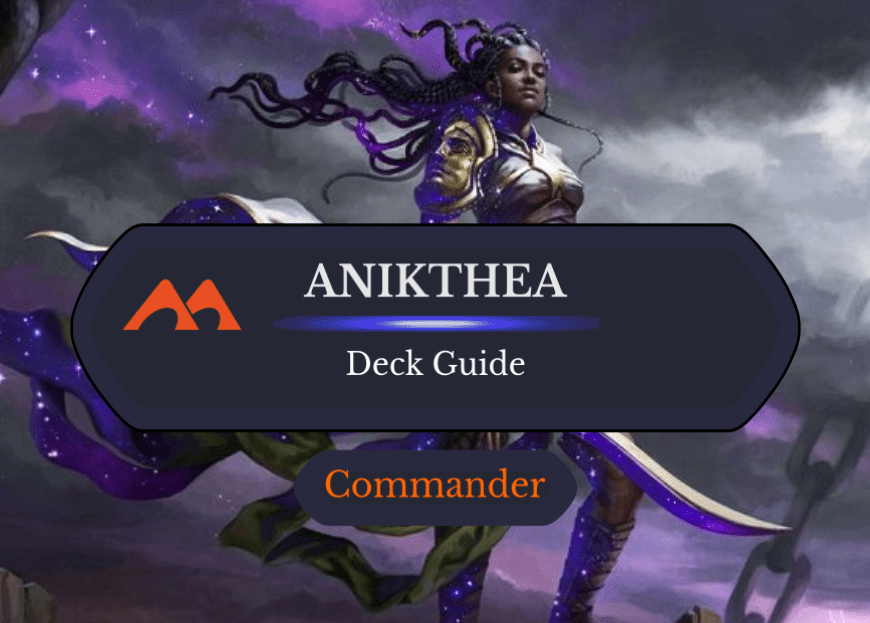
Add Comment